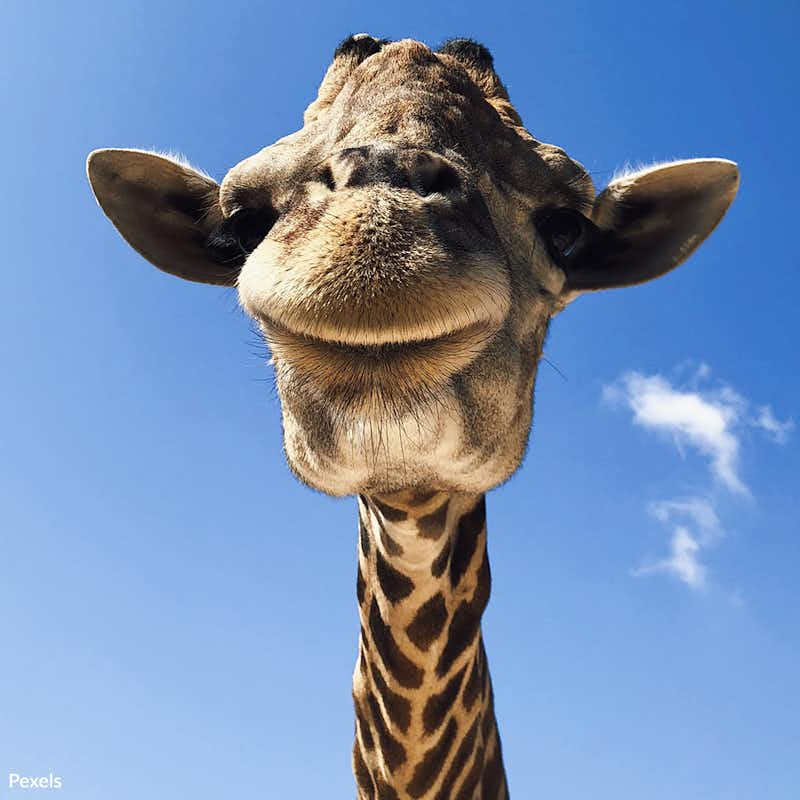Save Our Gentle Giant Giraffes from Vanishing Forever!
16,584 signatures toward our 30,000 Goal
Sponsor: The Animal Rescue Site
By supporting World Giraffe Day, we can learn more about the importance of giraffes to the ecosystem, the major threats they face, and the steps that can be taken to protect them from extinction.

Giraffes, with their towering height and graceful demeanor, are facing extinction. With less than 100,000 individuals remaining in the wild, their population has declined drastically over the last three decades, and giraffes are now classified as Vulnerable on the Red List of Threatened Species1. On World Giraffe Day, we must learn about the importance of giraffes to the ecosystem, the major threats they face, and the steps that can be taken to protect them from extinction.
World Giraffe Day, celebrated on June 21 every year, is an opportunity to raise awareness about these gentle giants and the threats they face2. Institutions around the world organize events on this day to celebrate and save giraffes in Africa. By supporting World Giraffe Day, you can directly help protect these majestic animals.
Giraffes play a vital role in the ecosystem by dispersing seeds, maintaining tree diversity, and helping to balance the food chain3. Their loss would have ripple effects throughout the ecosystem, negatively impacting tree species and predators, and the communities that depend on ecotourism. Unfortunately, giraffe numbers in Africa have plummeted in recent decades, and the species cannot lose much more without risking extinction4.
Habitat loss is the primary threat to giraffes and is the leading cause of their population decline5. The natural habitat of giraffes, which once extended over two-thirds of sub-Saharan Africa, has been significantly reduced due to various human activities. Giraffes are threatened by habitat fragmentation, habitat degradation, and habitat loss, primarily due to human encroachment and land-use changes.
Illegal hunting and poaching are another significant threat to the survival of giraffes6. While hunting giraffes is illegal in many countries, it still happens, often driven by the demand for giraffe parts and products, including meat, hides, bones, and tails. Giraffe hunting is not only illegal but also unsustainable as it reduces the population and can lead to genetic impoverishment.
Climate change also has a significant impact on the giraffe population7. Changes in temperature and precipitation patterns can alter vegetation growth, which is the primary food source for giraffes. This can lead to a reduction in the quality and quantity of food available for giraffes, which can have negative effects on their health and reproductive success. Changes in precipitation patterns can also impact the availability of water sources for giraffes.
We cannot allow giraffes to become another extinction statistic. We must take action to save these beautiful animals from disappearing forever. Learn about the major threats facing giraffes and take steps to protect them from extinction. Sign the pledge today to help save giraffes and ensure a future for these magnificent animals.
- The IUCN Red List of Threatened Species (2023), "Giraffe."
- Giraffe Conservation Foundation (2023), "World Giraffe Day."
- Harry Wells, Nora Ward, Ramiro D. Crego, World Economic Forum (7 October 2021), "Conservationists want to introduce elephants into Europe - here's why."
- Jen Murphy, Bloomberg (21 June 2022), "World’s Tallest Mammal Disappearing From Africa at Alarming Rate."
- Eben Diskin, Business Insider (7 December 2018), "Giraffes were just added to the list of species facing the threat of extinction."
- AUTHOR, Animal Survival International USA (6 February 2023), "Illegal traders refer to giraffes as “motorbikes” because selling their body parts can fetch enough money to buy a motorcycle."
- Tara Lohan (1 November 2021), "5 Ways Climate Change Will Affect Plants and Animals."
The Pledge:
Giraffes are facing significant threats to their survival, including habitat loss, habitat fragmentation, habitat degradation, human population growth, illegal hunting, disease, war, and civil unrest. Climate change is also affecting the distribution of vegetation types that giraffes depend on, leading to food shortages and affecting their ability to reproduce. With less than 100,000 giraffes remaining in the wild, and giraffe populations having declined by more than 90% in the last century, it is imperative that we take action to protect these amazing animals.
I recognize that giraffe populations are declining at an alarming rate, and that it is our responsibility to take action to save these amazing animals from extinction. As such, I pledge to take the following actions:
- I will avoid purchasing products that contain palm oil, as its production often leads to deforestation.
- I will use renewable energy sources to reduce the impacts of climate change on giraffe habitats.
- I will reduce carbon footprint by walking, biking, or taking public transportation instead of driving alone.
- I will support ecotourism and responsible travel to encourage sustainable use of natural resources.
- I will follow responsible tourism practices when visiting areas where giraffes live, such as not disturbing wildlife and respecting their habitats.
- I will educate friends and family about giraffes and the importance of conservation efforts.
- I will use social media to raise awareness about giraffe conservation.
- I will encourage lawmakers to pass legislation protecting giraffe habitats and cracking down on illegal hunting.
- I will support conservation efforts by purchasing products made from sustainable materials.
- I will donate to organizations working to conserve giraffes and their habitats, like Greater Good Charities and Project Peril.
By taking these actions, we can all play a role in saving giraffes from extinction. Giraffes are an important part of our natural world, and by taking action now, we can help protect them for generations to come.
Pledged by,